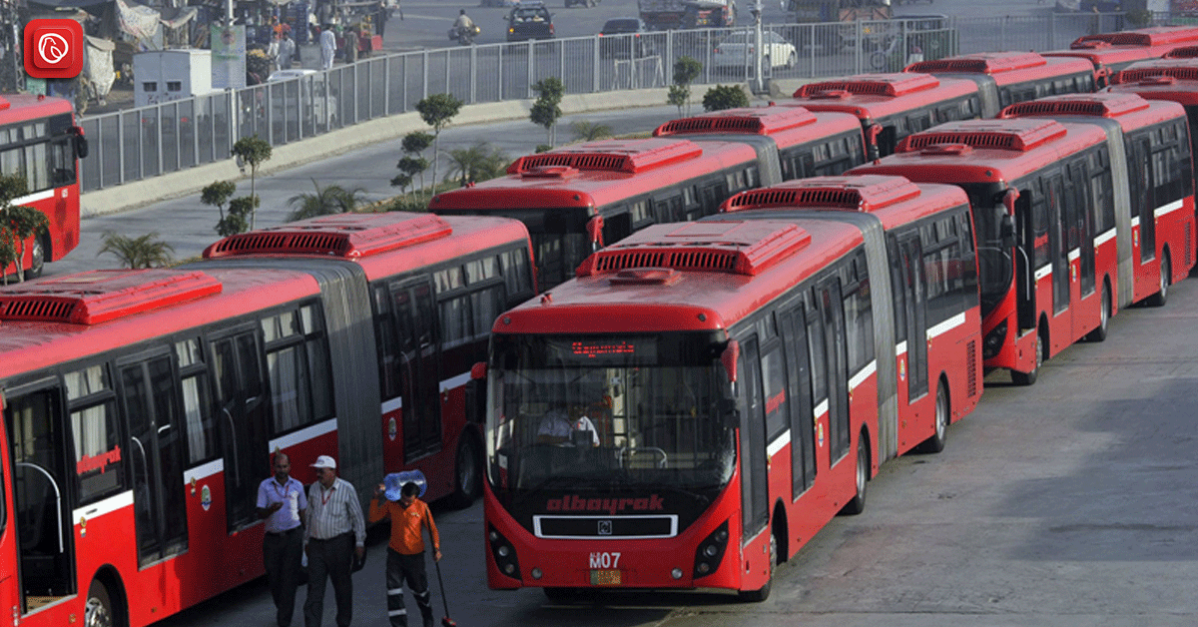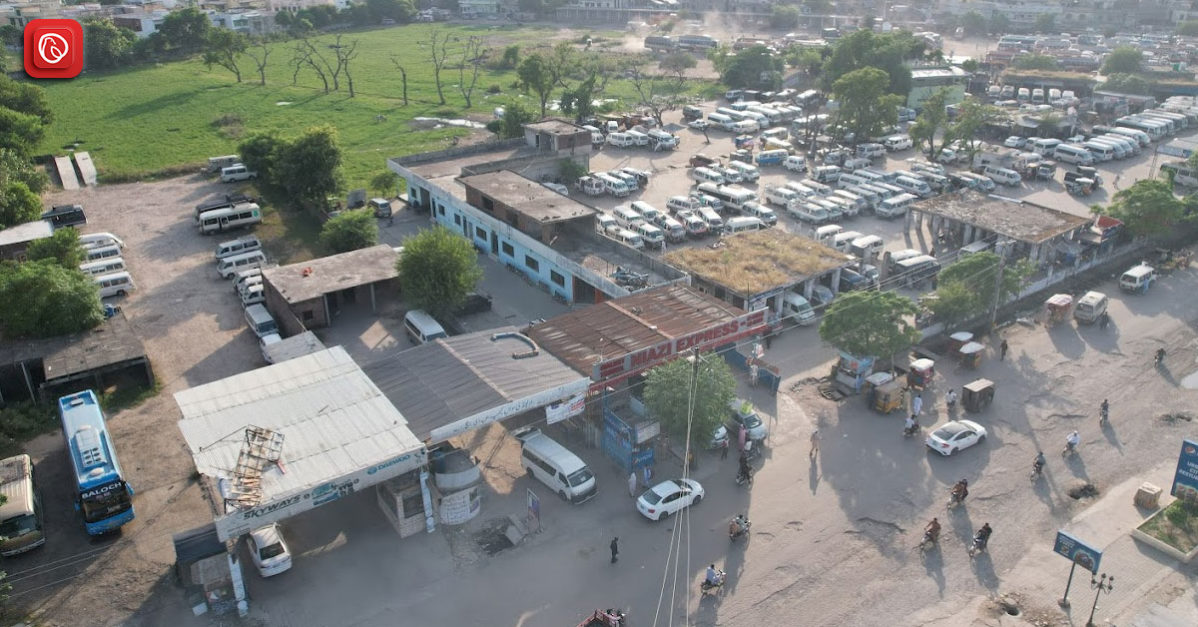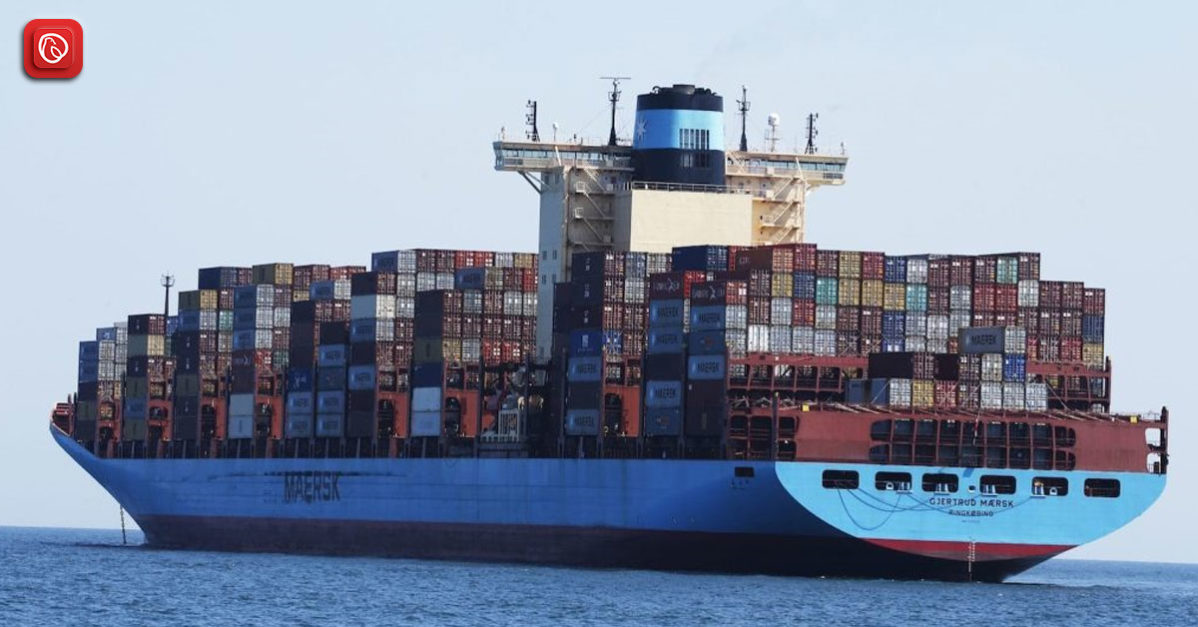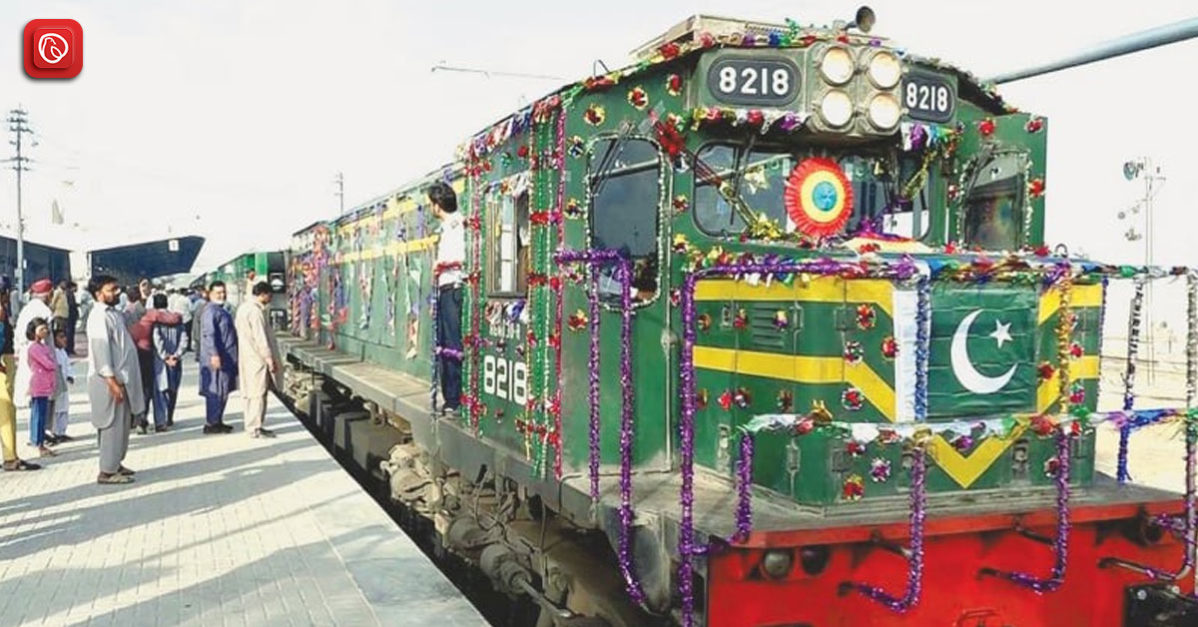In Multan, a city steeped in tradition and modernity, conventional transportation faces its limits. This burdens the roads with congestion, traffic accidents, and environmental concerns. Limited right of way and an inefficient public transportation system only amplify these challenges. To cater to the transportation needs for the people of Multan.
The Multan Metro bus project was initiated by the government back in 2015. Within no time the project was completed and the inauguration of metro bus Multan was held for the public in 2017. Tourists and even some locals might be wondering about the places accessible via metro bus Multan. For their ease, Graana.com has come up with a detailed list of all the Multan Metro bus routes.
Public Transport of Multan
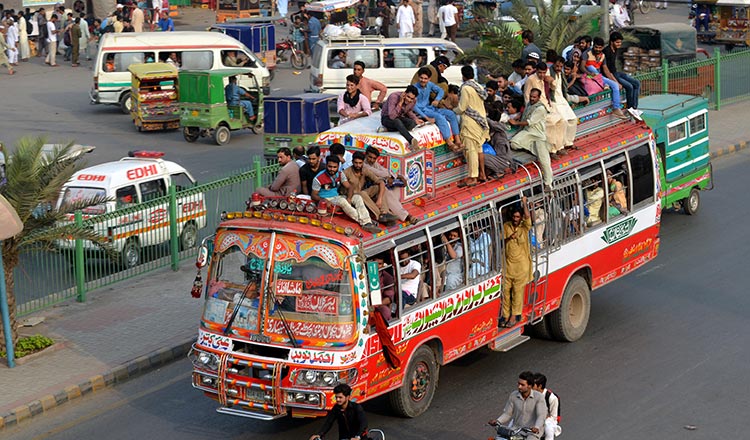
Multan grapples with significant intracity and intercity mobility challenges, primarily reliant on conventional transportation modes. The city’s road network shoulders a substantial burden, leading to a host of issues for Multan’s residents.
Problems such as congestion, traffic accidents, environmental degradation, and economic losses have become pronounced due to the overburdened road infrastructure. The limited right of way exacerbates these challenges, further compounded by an inefficient Public Transportation System.
The need for a more effective and sustainable public transport solution is evident, aiming to alleviate congestion, enhance safety, mitigate environmental impacts, and improve overall economic efficiency for the people of Multan, Pakistan.
Conventional Transport System in Multan
In Multan, the predominant modes of conventional transport include motorcycles, constituting over 50% of motorised trips, and cars, which account for only 17%. The city’s road network primarily comprises narrow streets, with limited motorways and major arterials.
Additionally, public transportation options are characterised by a few bus routes, while a considerable number of motorised three-wheelers operate as unofficial, yet cost-effective, public transport services.
Need for Metro Bus System in Multan
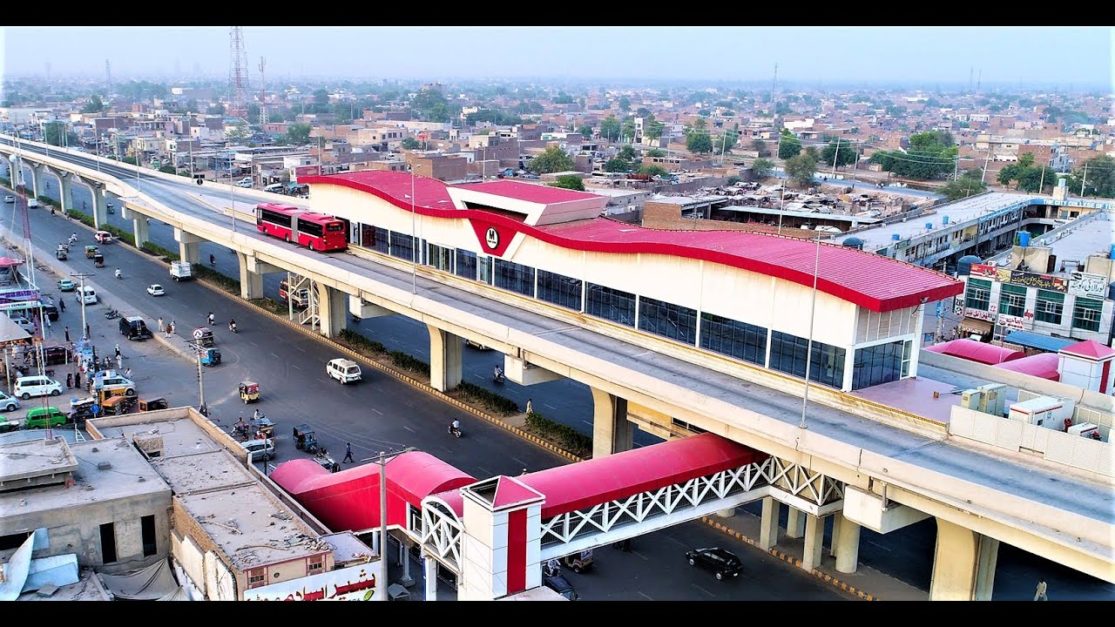
Recognising the challenges posed by the existing transportation system, there is a pressing need for a Metro Bus system in Multan. The introduction of a rapid transit mode, such as Bus Rapid Transit (BRT), aims to address issues of equity, improve overall transportation conditions, and promote sustainability.
Drawing inspiration from the successful implementation of Lahore’s BRT line, local authorities in Multan are leveraging this solution to create a more efficient, accessible, and environmentally friendly public transportation system for the city.
Multan Metro Bus Features
The Multan Metro Bus System (MMBS) boasts several noteworthy features aimed at addressing the city’s transportation challenges:
Corridor Design
Two-lane limited-access corridor with a passing lane at stations.
Route Details
Spanning from Bahauddin Zakariya University (BZU) to Chowk Kumaharan, covering a distance of 18.5 km.
Stations
- Comprising a total of 21 stations.
- Each station is equipped with centre platforms, two docking bays, and a level boarding system.
- Seven stations are at-grade, while 14 are elevated.
Elevated Portions
A portion of the route from Northern Bypass to BCG Chowk and Vehari Chowk to Jinnah Park is elevated, covering a distance of 12.5 km.
Station Facilities
- Installation of platform sliding doors for enhanced safety.
- Provision of elevators and escalators for improved accessibility.
Automated Systems
Implementation of an Automated Fare Collection System with Off-Board Ticketing for seamless transactions.
- Utilisation of a Bus Scheduling System to optimise service efficiency.
- Deployment of a Vehicle Location System for real-time tracking of buses.
- Incorporation of a Passenger Information System to provide timely and relevant information to commuters.
Fleet Characteristics
- Operating with a fleet of 35 articulated air-conditioned buses.
These features collectively contribute to the modernisation and efficiency of the Multan Metro Bus System. It aims to alleviate congestion, enhance accessibility, and provide a sustainable mode of public transportation for the residents of Multan.
Multan Metro Bus Routes
| Route No. | Route Alignment | Type of Bus | Operational Category | MBS Station to Serve | Nos. of Buses |
| Feeder | |||||
| 1 | Chowk Kumharan to Dera Adda via Chungi No 9, Ghanta Ghar | Mini Bus | Phase-I | Chowk Kumharan, Chungi no. 9 | 12 |
| 2 | Suraj Miani to Qasim Fort via Suraj miani road Katchery and Ghanta Ghar | Mini Bus | Phase-I | Qasim fort | 6 |
| 3 | NFC/Khaad Factory to Ghanta Ghar via Chowk Kumharan | Mini Bus | Phase-I | Chowk Kumharan, Qasim Fort | 12 |
| 4 | Nag Shah to Vehari Chowk via Bahawalpur Chowk | Mini Bus | Phase-I | Vehari Chowk | 9 |
| 5 | Canal Bridge to Chowk Kumharan via Piran Ghaib Road | Mini Bus | Phase-I | Chowk kumharan | 7 |
| … | … | … | … | … | … |
| 11 | BCG Chowk to Dera Adda via Shah Abbas Chowk, Double Phatak | Mini Bus | Phase-I | BCG Chowk | 10 |
| 12 | Nawab Pur to Airport road Via MDA chowk, Nawa shehr, Qasim road | Mini Bus | Phase-II | – | 14 |
| 13 | Dera Adda to Airport Via Nishtar Hospital | Mini Bus | Phase-II | – | 9 |
| … | … | … | … | … | … |
| 30 | Shershah Bypass to Railway Station | Standard Bus | Phase-IV | – | 19 |
| 31 | Khanawal Bypass to Railway Station | Standard Bus | Phase-IV | – | 15 |
| 32 | Khanewal to Vehari Chowk | Standard Bus | Phase-V | – | 10 |
| … | … | … | … | … | … |
| Express | |||||
| 26 | Chowk Kumharan to Railway Station | Standard Bus | Phase-IV | – | 11 |
| 27 | Chowk Kumharan to Railway Station via Vehari Chowk, BCG chowk, Double Phatak | Standard Bus | Phase-IV | – | 14 |
| … | … | … | … | … | … |
| Sub Urban | |||||
| 32 | Khanewal to Vehari Chowk | Standard Bus | Phase-V | – | 10 |
| 33 | Makhdoom Rasheed to GBS | Standard Bus | Phase-V | – | 9 |
| … | … | … | … | … | … |
| MBS | |||||
| Red Line | BZU to Chowk Kumharan via Northern Bypass, Chungi No. 9, Qasim Fort, Chungi No. 14, BCG Chowk, Vehari Chowk | MBS | – | – | 35 |
| Orange Line | Chowk Kumharan to BCG Chowk via Chungi no. 9, SP Chowk, Double Phatak, Shah Abbas Chowk | MBS | – | – | 29 |
Making Transportation Inclusive
The Multan Metro Bus System is dedicated to making sure everyone can easily use it. All stations and buses are designed to be accessible for people with disabilities. This way, everyone can benefit from the convenience and efficiency of the system.
Driving Urban Improvement
The Multan Metro Bus System hasn’t just changed how people get around the city; it has also played a big role in making the city better. By reducing traffic jams and making the air cleaner, the system has helped create a city that’s more sustainable and enjoyable to live in.
Enjoy the Ease
Whether you live in Multan or you’re just visiting, the Multan Metro Bus System welcomes you to experience its convenience and efficiency. With its many routes, comfortable buses, and easy-to-use infrastructure, the Multan Metro Bus System is the perfect way to explore the lively city of Multan.
FAQs
Here are some FAQs about Multan Metro Bus Routes below:
What is the Multan Metro Bus System?
The Multan Metro Bus System is a bus rapid transit (BRT) system in Multan, Pakistan. It is a 18.5 km (11.5 mi) long corridor that runs from Bahauddin Zakariya University (BZU) to Chowk Kumaharan. The system has 26 stations and is operated by the Punjab Masstransit Authority (PMA).
What are the benefits of using the Multan Metro Bus System?
The Multan Metro Bus System offers a number of benefits, including:
- Reduced travel times
- Improved reliability and frequency of service
- Comfortable and air-conditioned buses
- Affordable fares
- Reduced traffic congestion and pollution
How do I pay for a fare on the Multan Metro Bus System?
You can pay for a fare on the Multan Metro Bus System using a rechargeable smart card or cash. Smart cards can be purchased at any metro station or online. Cash fares can be paid to the bus conductor.
What are the operating hours of the Multan Metro Bus System?
The Multan Metro Bus System operates from 5:00 AM to 11:00 PM, seven days a week.
Are there any feeder routes to the Multan Metro Bus System?
Yes, there are 15 feeder routes that connect to the Multan Metro Bus System. Feeder routes are smaller buses that operate in less congested areas and connect to the main metro corridor at designated stations.
What are the different routes of the Multan Metro Bus System?
There are 15 main routes on the Multan Metro Bus System. The routes are numbered 1 to 15 and each route has a different origin and destination.
Where can I find a map of the Multan Metro Bus System routes?
You can find a map of the Multan Metro Bus System routes on the Punjab Masstransit Authority (PMA) website.
What are the schedules for the Multan Metro Bus System routes?
You can find the schedules for the Multan Metro Bus System routes on the Punjab Masstransit Authority (PMA) website.
Is the Multan Metro Bus System accessible to people with disabilities?
Yes, the Multan Metro Bus System is accessible to people with disabilities. All metro stations have ramps and elevators, and all buses are equipped with low-floor access and priority seating for people with disabilities.
Can I bring my bicycle on the Multan Metro Bus System?
Yes, you can bring your bicycle on the Multan Metro Bus System, but it must be folded and stored in the designated area on the bus.
This was all about Multan Metro bus routes. If you are looking for routes of Lahore Metro bus or Islamabad – Rawalpindi Metro bus, go visit Graana.com.
